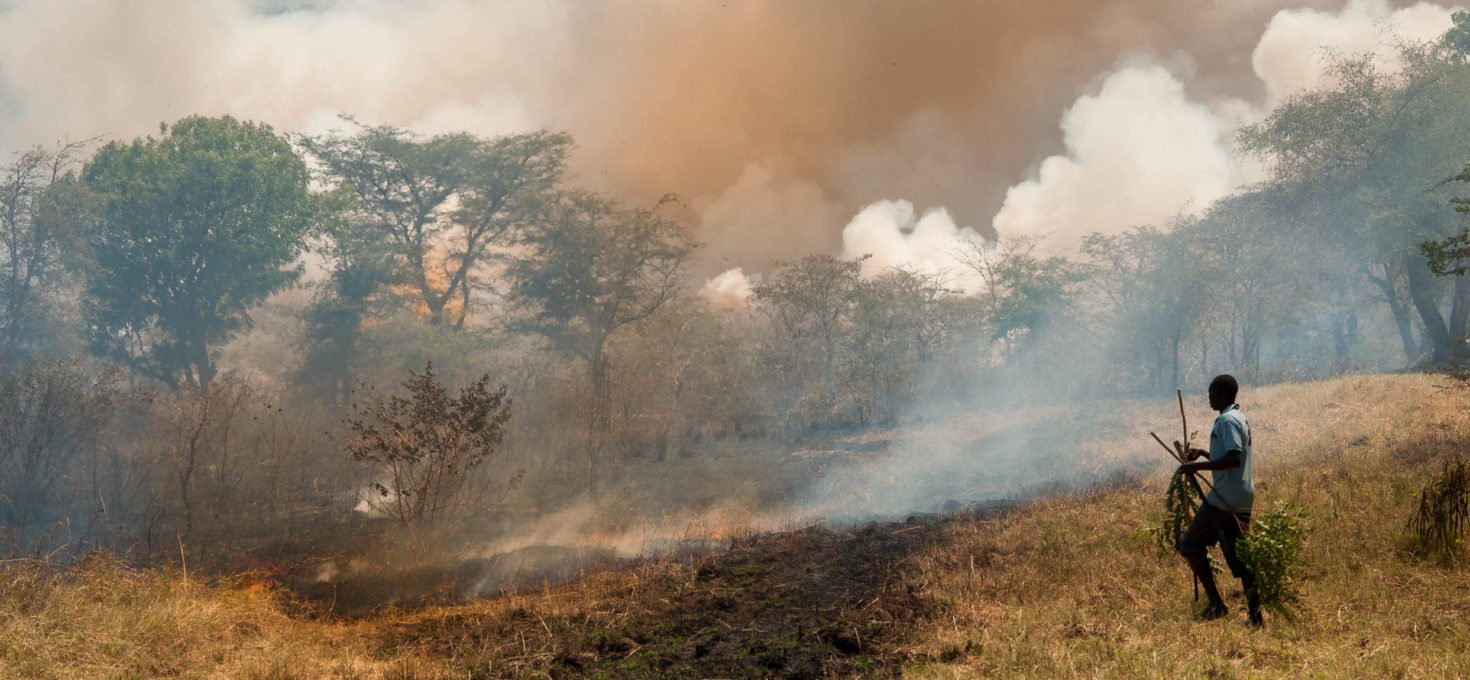The dry season is in full stride. It has been many weeks since last we had rain. When I think of the dry season, the intense heat and chapped skin come to mind. This year, I was reminded of its more dynamic character. Yes, it’s hot and dry (hence the name). It is also a relief from the constant mud and moisture of the wet season. It is the time when insects multiply, time to burn the fields, and build new homes.
It is hard to tell exactly when the dry season begins. You casually count the days since the last rain, never knowing if you’ll have to begin again. A good premonition that the final count has arrived is the number of flies. When you leave your house and are immediately swarmed by flies, there will only be one or two more rain storms. As the days progress, you notice more crickets, grasshoppers, pincher bugs, gnats, even scorpions all out in search of water. I will confess, this is not a scientific fact, merely an observation.
After the Karimojong harvest a field, it is neglected for many months. Weeds reclaim the land within a matter of days, including an inedible wild eggplant and a small feathery bush they use as brooms. Grass taller than a man hides the remaining sorghum stalks. Various thorn trees take root. When the dry season is in full swing, the Karimojong cut down the tall grass to use as roofing material and set controlled fires to the fields. This prepares the field for plowing when the rains begin again. There are days when the sky is clouded with a smoky haze. It also scares out field rats that they catch, roast, and eat whole, hair and all. These fires can be a threat to the houses topped with grass roofs. Every few years, a village goes up in flames as a fire gets out of control. It is surprising that it happens as infrequently as it does.
In America, when we need home improvement supplies, a new appliance, or a new coat of paint we go to a store. We might do some research on the cheapest price or the best product, but in the end the decision is made and we go pay the price. Here it is an entirely different ball game. One tree is good for the wall supports, another for the roof structure. The bark of a third tree is used as rope to tie the wood into a bundle so that it can be carried on the head (by women) or the shoulder (by men) to the worksite. The tall grass mentioned above, is cut with a sickle and bundled with an old piece of mosquito net. A certain type of dirt is best for mudding the walls which they mix with water and stomp into mud like grapes into wine. The site must be cleared and measured. People must be gathered or hired to carry the supplies. It can take up to fifty people to put the roof structure in place on an elevated storage house. For decoration, people smear their walls with different colors of mud or mix it with cow feces. The Karimojong are foragers. They know where each kind of tree, type of dirt and the tallest grass is found. The whole savannah is their shopping mall. And this is the time to move house, literally.
As I write this, I can hear the crackling of a fire in Nakaale. This afternoon, the fields behind our compound were engulfed in flames. Our bedroom and porch are layered with whirling ash. No harm done, the fire has moved on and our fields are cleared for the coming planting season.

Thank you for sharing , it is very nice to know how other Country prepared their life and build for comfort.